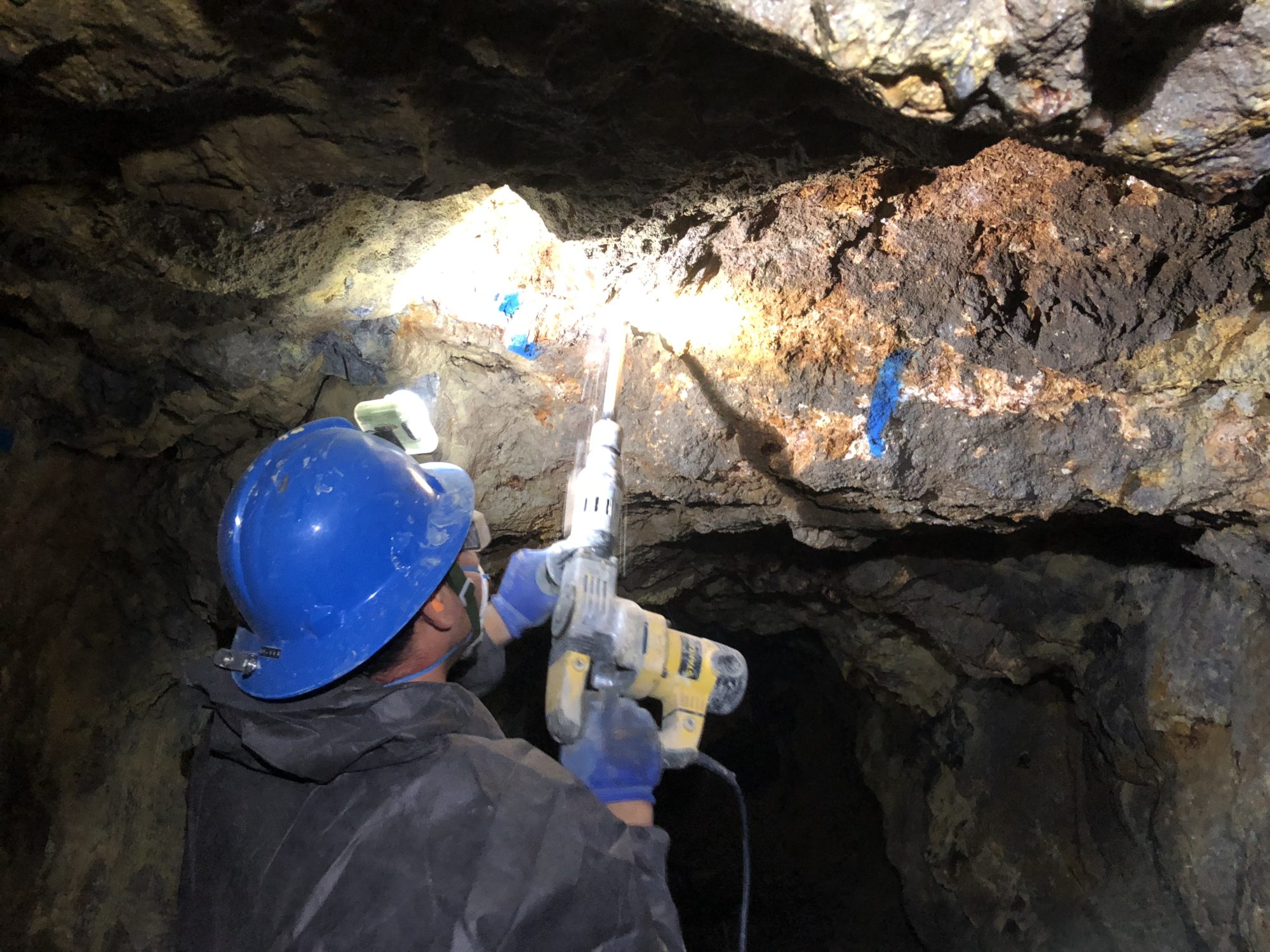Southern Gold Ltd has completed the first phase of systematic underground channel sampling at its Deokon gold project in the central-southwest of South Korea under its strategy to commence work quickly on newly acquired tenure. Access discussions with the land-owner were approved and risk assessments conducted within three-weeks of tenement Jeonju 70 being granted. Underground sampling involved a total of 79 channel samples taken across 22 sample lines from two historical drives on the lower 224 Level of the historic Shin adit Au-Ag mine.
- Channel samples taken from within the small-scale historical Shin adit gold-silver mine
- Significant intercepts include 0.35 m @ 12.6 g/t Au and 509 g/t Ag, 0.25 m @ 12.3 g/t Auand 1,290 g/t Ag, and 0.4 m @ 9.26 g/t Au and 1,165 g/t Ag
- With the tenor of historical results confirmed, Deokon is classified as a “walk-up” drill target to be tested shortly.
Southern Gold Managing Director, Simon Mitchell: “Deokon has the potential to advance quickly with Southern Gold having obtained site access, the commencement of field work and turning around results, all within six weeks. While much more work remains to be done, planning has commenced on drilling proposals with the focus on using suitable drilling equipment capable of drilling within the historical underground workings.
“The Shin adit at Deokon is a very small part of a much larger mineralised system but these high-grade results have clearly replicated the tenor of historical results which bodes well for confirming additional high grade gold and silver across the project area.”
The Shin adit mine was historically worked starting sometime between 1958 and 1980, with the latest phase occurring between 1997 and 2010. Only the lower 224 level is currently accessible and comprises a 160-m-long horizontal 2 by 2 m drive with two cross-cuts following lode zones. The first cross-cut from the portal is 60 m in length, and the second 59 m in length. Internal raises and stopes are present extending to higher, yet to be assessed mine levels. No production figures are available for the historical mining which appears to have occurred on two vein/lode zones over 75 vertical m and 60 horizontal m. Mineralisation has not been tested at depth, and inadequately tested along strike.











